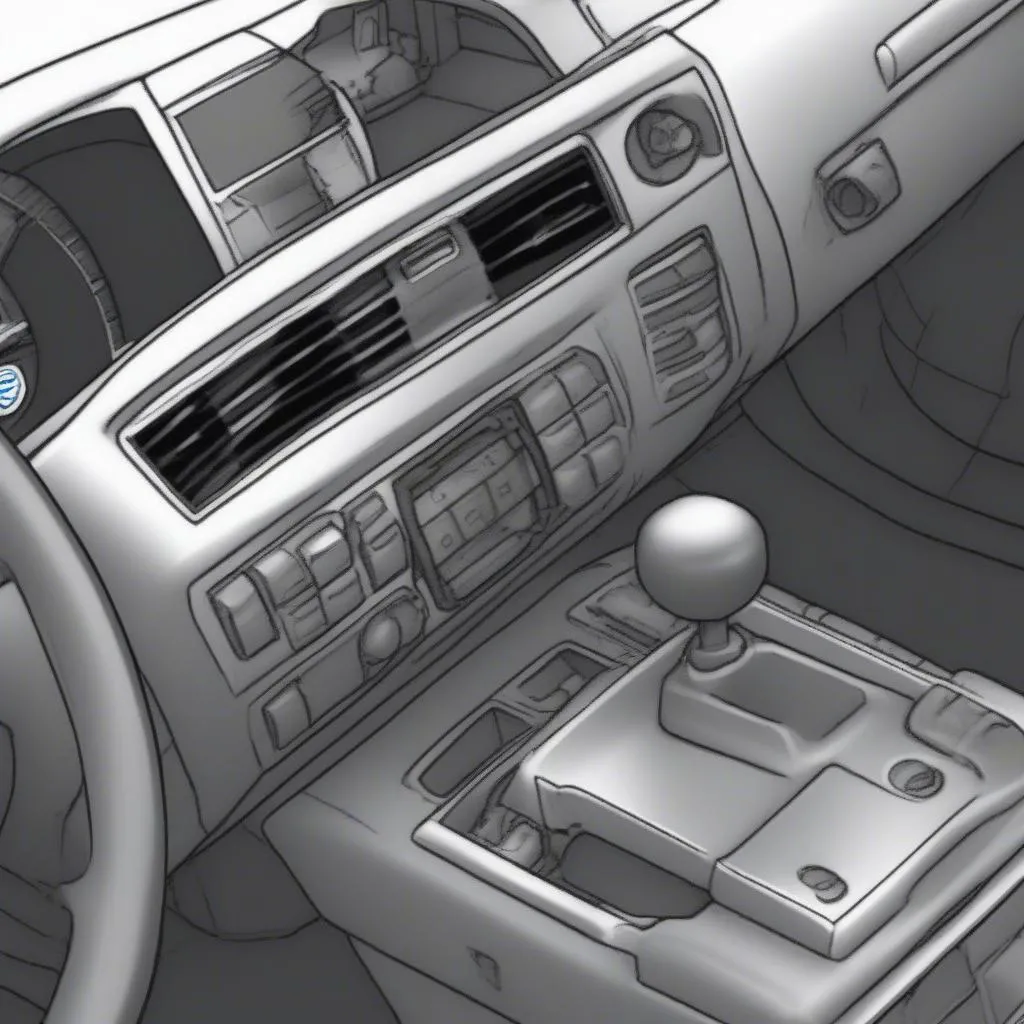Have you ever been in a situation where your 1999 Honda CR-V threw a code and you needed to get it read by a scanner? Finding the OBD port can be a real hassle, especially if you’re unfamiliar with car maintenance. But don’t worry, I’m here to help!
Understanding the Importance of the OBD Port
The OBD (On-Board Diagnostics) port is a critical component of your car’s diagnostic system. It’s a standardized connector that allows technicians and mechanics to connect diagnostic tools like a Dealer Scanner to retrieve and interpret diagnostic trouble codes (DTCs).
These DTCs provide vital information about potential issues within your vehicle’s engine and other systems. By understanding and interpreting these codes, you can quickly identify problems, troubleshoot them, and get your car back on the road.
Finding the OBD Port on Your 1999 Honda CR-V
The location of the OBD port can vary slightly depending on the year and model of your car. But for the 1999 Honda CR-V, it’s typically located underneath the dash on the driver’s side, near the steering column. It should be a 16-pin connector.
Visualizing the Location:
 1999 Honda CR-V OBD port location under dash
1999 Honda CR-V OBD port location under dash
Helpful Tips:
- Look for the connector: It’s a 16-pin connector with a rectangular shape, similar to a standard computer port.
- Feel around the area: The OBD port is usually located near the steering column, so feel around the lower part of the dash on the driver’s side.
- Consult your owner’s manual: Your car’s owner’s manual should have a diagram showing the exact location of the OBD port.
Understanding the Role of Diagnostic Tools
Once you’ve located the OBD port, you can connect a Dealer Scanner or a generic OBD2 scanner to read the DTCs. These scanners are designed to communicate with your vehicle’s onboard computer and provide you with valuable diagnostic information.
Utilizing a Dealer Scanner:
A Dealer Scanner is a specialized diagnostic tool that’s designed for specific car models, like a Honda Dealer Scanner for your 1999 CR-V. These scanners offer a wider range of capabilities than generic OBD2 scanners, such as:
- Accessing more detailed information about your car’s systems
- Reprogramming various vehicle modules
- Clearing DTCs
Common Questions Related to the OBD Port
Q: How do I find a Dealer Scanner?
A: You can often find Dealer Scanners at local auto parts stores, online retailers, or even from auto repair shops.
Q: Can I use a generic OBD2 scanner instead?
A: While a generic OBD2 scanner might not provide the same level of information as a Dealer Scanner, it can still be helpful for basic diagnostics. However, it’s recommended to consult a mechanic or dealership if you’re facing more complex issues.
Q: Why can’t I find the OBD port?
A: It’s possible that your car’s OBD port is hidden behind a panel or trim piece. You might need to remove these to access it. If you’re still having trouble finding it, you can always consult your owner’s manual or contact a mechanic for assistance.
Conclusion
Finding the OBD port on your 1999 Honda CR-V is essential for performing any diagnostic checks. Knowing where it’s located and how to use a Dealer Scanner or a generic OBD2 scanner can save you time and money in the long run. If you’re unsure about anything, always consult a qualified mechanic or dealership.
We hope this article has provided you with the information you need to successfully locate the OBD port on your 1999 Honda CR-V. If you have any further questions or need assistance with your vehicle’s diagnostics, don’t hesitate to contact us or check out other helpful articles on our website:
Remember, your car’s OBD port is a powerful tool for keeping it running smoothly.
Need help with your Honda CR-V? Contact us via Whatsapp: +84767531508 for expert help, 24/7.